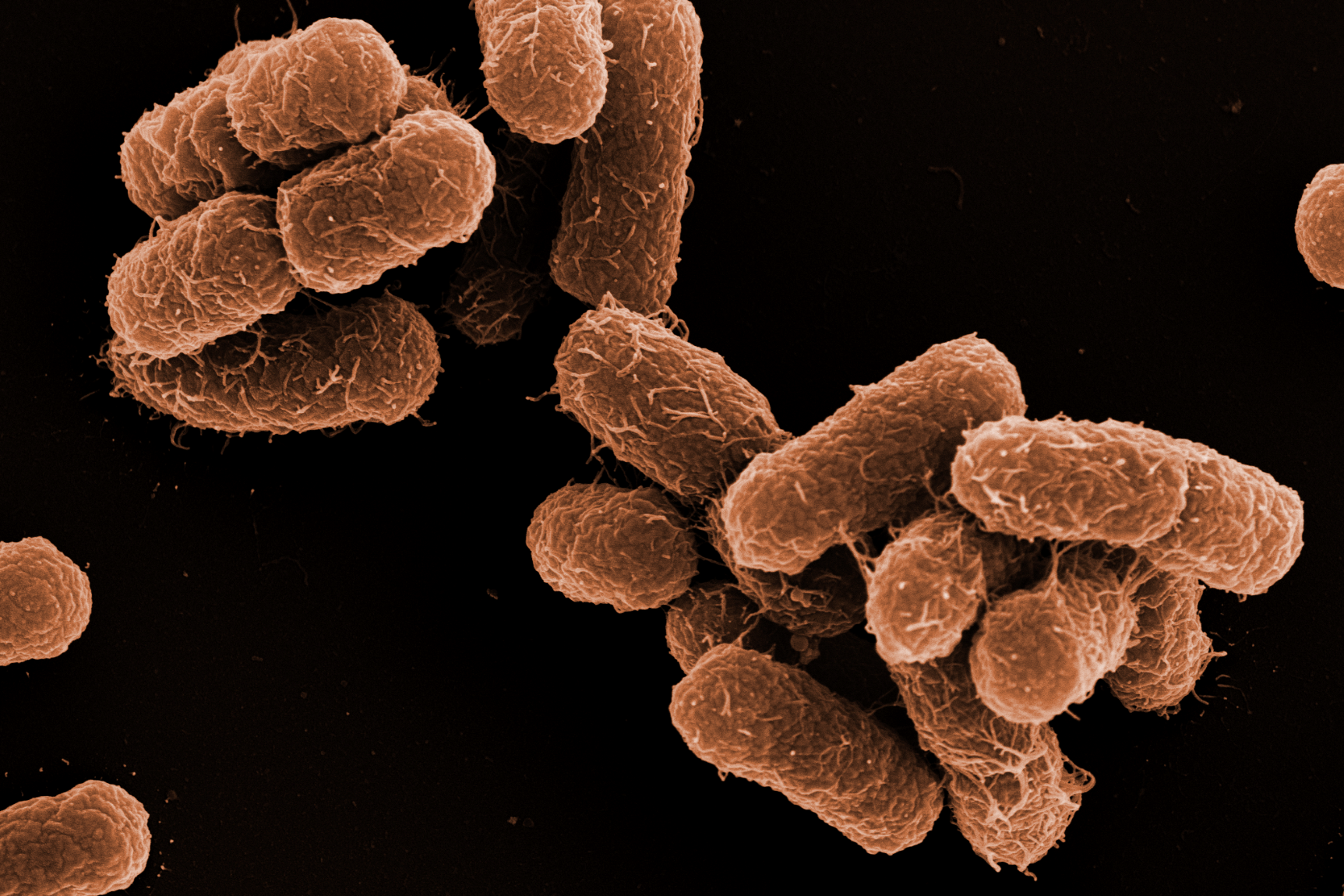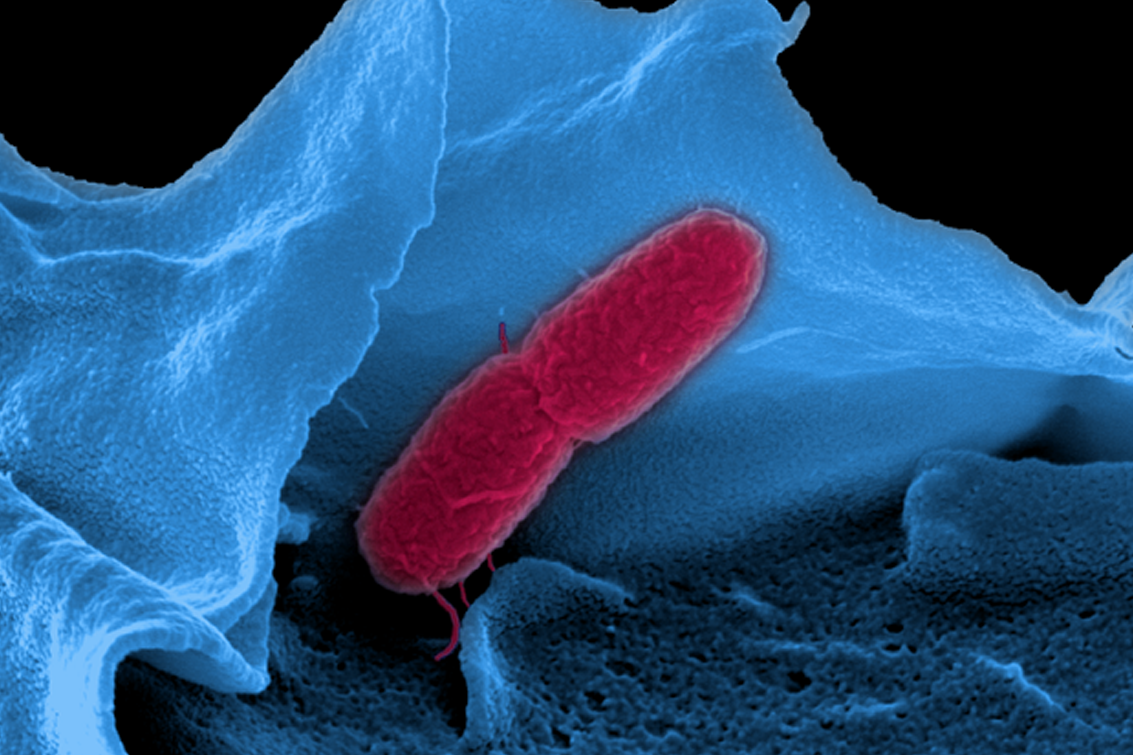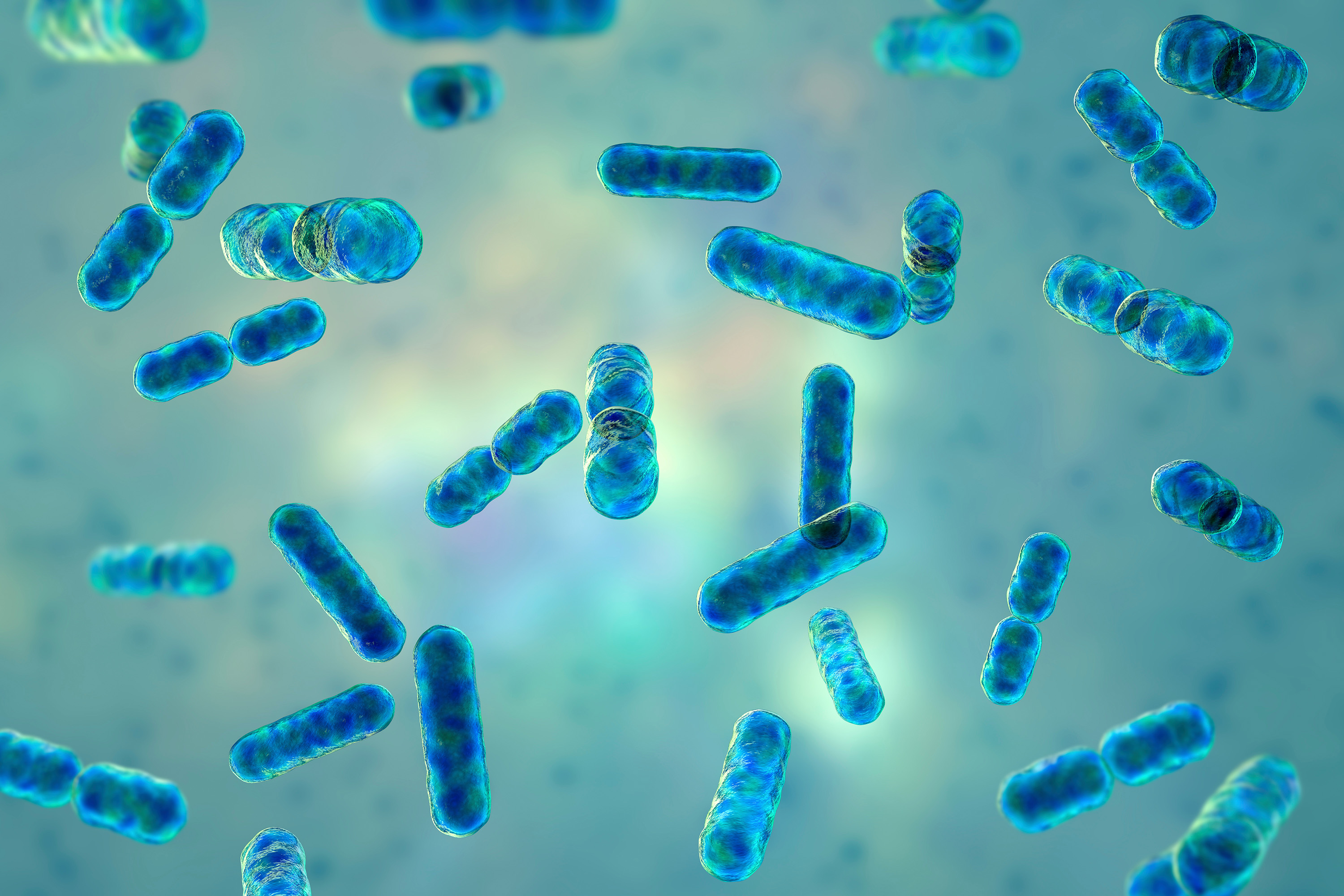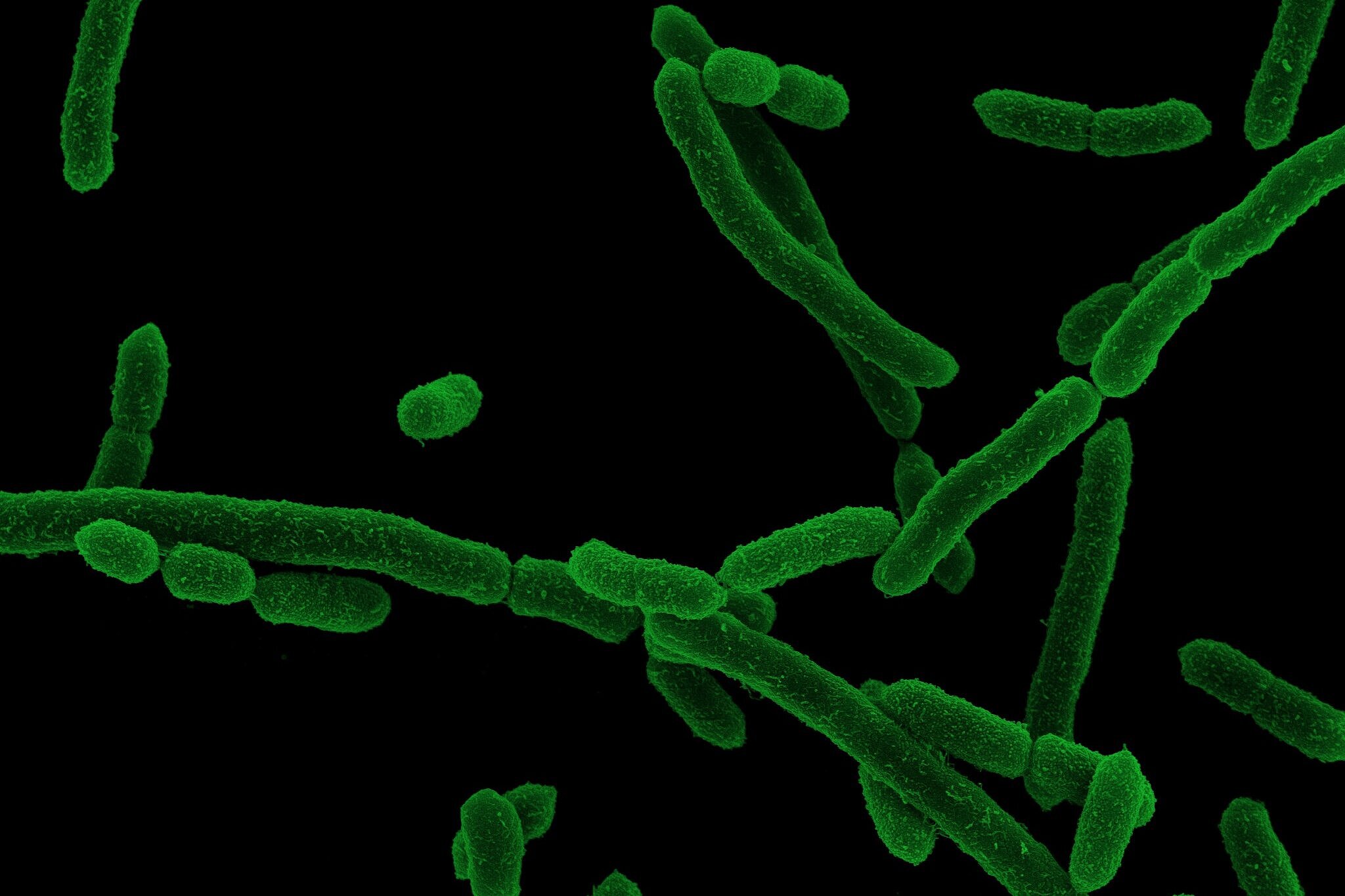Among other findings, they discovered that bacteria of the Klebsiella oxytoca species in particular exert pressure on salmonella in several ways. Eventually, these findings could one day be used to develop a therapy that takes a completely different approach to the currently known treatments for infections: Instead of using antibiotics, which weaken the important microbiome as a side effect, the microbiome could be specifically strengthened to enhance resistance against salmonella. The researchers have published their latest results in the journal Nature Microbiology, while a pioneering methodology study was published in the Journal of Bacteriology in February.
When a person ingests food, a battle for nutrients begins in the intestine. Various bacteria within the microbiome begin to break down the food and extract nutrients for themselves. In doing so, they not only compete among themselves, but also with dangerous intruders such as salmonella or enterohaemorrhagic Escherichia coli (EHEC). Certain bacteria within the microbiome appear to be particularly effective against salmonella, as an international team led by Lisa Osbelt-Block and Till Strowig from the HZI department “Microbial Immune Regulation” has now discovered. These bacteria belong to the Klebsiella oxytoca species complex and employ multiple strategies against salmonella, offering potential for novel therapeutic approaches. These principles may also be applicable to the treatment of other infectious diseases.
Bacteria within the microbiome compete with salmonella for nutrients
The specific mechanisms how Klebsiella oxytoca affects salmonella can now be read in the renowned journal Nature Microbiology. This research effort represents an international collaboration involving not only the HZI but also scientists from the University of Graz in Austria, the Robert Koch Institute (RKI) and the German Center for Infection Research (DZIF) in Braunschweig and Hannover. The study was financially supported by the European Structural and Investment Fund (ESF), the Joint Programming Initiative on Antimicrobial Resistance (JPIAMR) and the Austrian Science Fund, among others.
The first mechanism through which Klebsiella oxytoca exerts pressure on salmonella is simply competition for food. "You could describe it like this: Klebsiella oxytoca and salmonella have the same food preferences, leading to the competition for the same nutrients If more interested parties want the same thing, this puts pressure on everyone - and as Klebsiella oxytoca is somewhat more assertive, salmonella in particular falls behind and starves, resulting in disrupted spread," says Lisa Osbelt-Block.
A toxin previously classified as exclusively harmful can keep salmonella in check
A large proportion of Klebsiella oxytoca strains have the ability to secrete a toxin, which is known to be harmful to the human gut. Surprisingly, the research team has now discovered that the Klebsiella oxytoca toxin also exhibits efficacy against salmonella. This discovery marks in part a paradigm shift: Formerly recognized solely for its negative impacts, the toxin's newfound ability to combat salmonella challenges previous assumptions. "The effect of the toxin on salmonella could explain the release of the toxin in evolutionary terms. Interestingly, strains that can produce the toxin are found particularly in the microbiome of children. In some studies, toxin-producing strains are found in almost every second child. This observation makes a little sense, at least in theory," says Till Strowig.
Nevertheless, the scientists do not see stimulating the release of the toxin as a therapeutic option. "The detrimental effects of the toxin remain prominently in the foreground. Thus, it is preferable to maintain the level of Klebsiella oxytoca at a stable average to prevent or combat a salmonella infection," says Lisa Osbelt-Block. The research team has already identified indications of how this could be achieved: Evidently, a diet high in simple sugars triggers Klebsiella oxytoca to release more toxin, whereas a low sugar diet, on the other hand, leads to reduced toxin production.
A diverse microbiome protects against salmonella
The researchers are currently exploring alternative, more targeted approaches to modulate the levels of Klebsiella oxytoca and toxin release. "If we can identify effective methods, such as influencing Klebsiella oxytoca through specific dietary changes or the intake of certain substances, it would present an entirely new perspective: Targeted reinforcement of the microbiome," says Till Strowig. In view of the current treatment options for severe salmonella infections, this would be a huge step forward: Antibiotics are currently administered - and they always disrupt the microbiome in the gut. In recent years, the lasting impact of increased antibiotic usage on the microbiome has become increasingly apparent. "Antibiotics reduce the diversity of the microbiome. And a diverse microbiome is known to be healthy and important. Incidentally, this also applies to resistance to salmonella: The more different strains there are in the microbiome, the greater the likelihood that some strains such as Klebsiella oxytoca will compete with salmonella for the remaining resources," says Lisa Osbelt-Block.
A newly established method also enables the investigation of other bacteria in the microbiome
In addition to seeking methods to specifically influence Klebsiella oxytoca and its close relatives, Osbelt-Block, Strowig and their team are also trying to gain better understanding of Klebsiella oxytoca’s mode of action. To do this, they are specifically switching genes on and off in the bacterium - while it resides in the digestive tract of animals. The researchers have already published a paper on the application of this method in the Journal of Bacteriology in February. This technique, which is related to the application of the CRISPR gene scissors, could also be used to analyze the function of other bacteria in the microbiome. There is still a lot to uncover in there, as experts estimate that the microbiome often consists of more than 500 species.
Author: Dr Christian Heinrich




